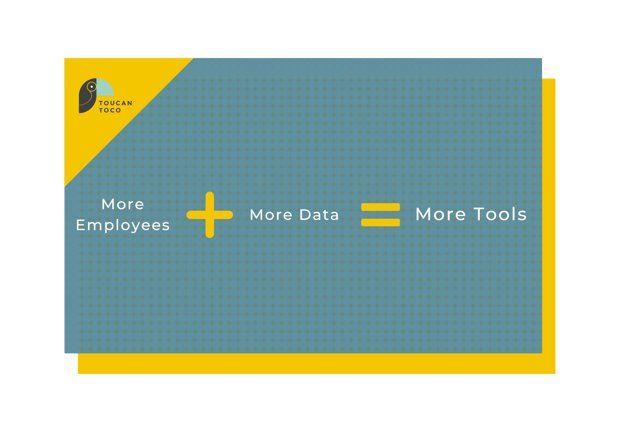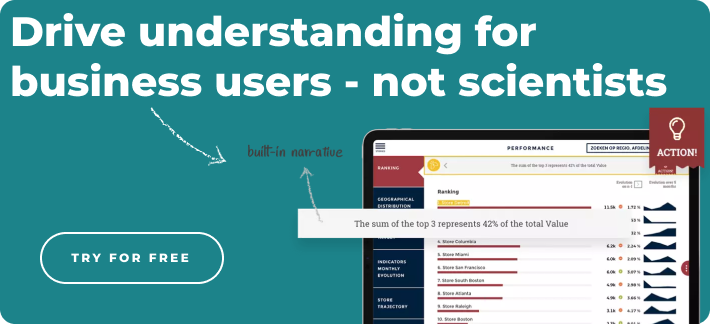Modern Tech Stack - what is it?
The phrase "tech stack" is always thrown around, especially for SaaS businesses. Strides in innovation and technology have unlocked new avenues for businesses to collect more data, employ more people, and increase revenue.
The tech stack is a suite of programs and software that a company invests in to increase productivity, output, and insights. The concept of companies using various technologies is nothing new, it's been happening since the 90s.
The technology landscape has transformed since then, and the modern tech stack's added dimensions can cause confusion and wasted resources if assembled incorrectly. We'll break down the categories of the modern tech stack and why they are crucial to your business operations.
Why Should You Invest in Your Tech Stack?
In 2022, chances are that you're leveraging modern technology to enhance your company operations. Why? It all comes down to a simple formula:

Increases in data mining, collection, and storage are driving the expansion of the tech stack. On average, a company manages 192.9 TB of data, while an enterprise manages a whopping 347.5 TB. These figures are only increasing as tech providers continue to innovate, necessitating the hiring of more employees to dissect, analyze, and act on data insights.
Tech Stack Categories
The modern tech stack is multidimensional, with each category contributing to a specific goal or operation. Here are the major categories of software to include in your modern tech stack:
- Data Catalogs: Data catalogs collect metadata, and combined with data management and search tools, they help analysts and other users to find the data that they need
- SQL Editors: SQL is one of the most used programming languages when it comes to data servers, and SQL editors provide access to data. When you hear the phrase "democratize your data," know it's synonymous with making SQL accessible to all relevant employees across every department.
- ETL and EL-T Tools: If you're a company collecting large amounts of data, chances are that your data sets are scattered across multiple sources. ETL and EL-T tools allow you to distribute data from data sources to data warehouses.
- 0-Code Data Tools: As your company collects larger amounts of data, the need for talent and expertise to manage it increases. This can often be an expensive operation, and many providers are developing 0-code tools that are accessible to everyone, regardless of data knowledge or coding abilities. Toucan is an example of a no-code visualization tool that democratizes its service across all employees and users.
- Data Storage Tools: Perhaps one of the most important aspects of data collection, data storage tools allow you to store your data seamlessly in the cloud.
- Data Modeling Tools: Although data collection is the first step to generating insights, your data must be transformed to build visualizations.
Although there are many more categories in the modern tech stack, these are the main solutions that companies use to assemble seamless data workflows. It is important to research and diagnose your company's needs when building your modern tech stack to avoid unnecessary spending and low adoption rates.
Now That We Have the Tools, What's the Process?
Let's say that you invest in all these tools, but now what? The data process is a complex one that requires the appropriate understanding and expertise. Here's a general description of how data flows through your tech stack:
Data Creation
Data creation is the first step in using your modern tech stack to generate insights. Your data catalogs and data storage tools act in tandem to capture and store data through digital or physical systems.
Your company likely already has ways to capture data, either through physical sensors or digital methods such as URL tracking.
Data Processing and Organization
Once you have gathered enough data, your data storage tools have the capability to structure your data so that it can be used. Your data will likely come in multiple formats and languages, and your data warehouse will have the capability to organize and process your data so that it is ready for import into your visualization/modeling tool.
Data Analysis
Once your data is collected, processed, and organized, it's time to use it to generate actionable insights. Whether it's a no-code tool like Toucan or a more complex tool, building models and visualizations from your data turns your unreadable data into simpler data stories.
Why Should You Include Toucan in Your Modern Tech Stack?
The data process is complicated, and while not every company is the same, many businesses suffer from hurdles and low adoption rates due to coding barriers. By adding a no-code tool like Toucan to your modern tech stack, you can simplify the data process for every user and increase adoption rates.
By using a no-code tool like Toucan to create visualizations, you can seamlessly connect your data warehouse with 1-click integration to automatically import your data in real time. Learn more about how Toucan can simplify your tech stack and build data stories with guided analytics.


